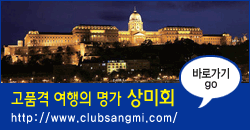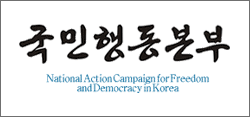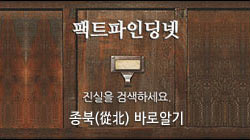by Kim Pyung-woo (Attorney and former head of Korea Bar Association)
On Dec. 9, the National Assembly passed a bill seeking to impeach President Park Geun-hye and the Constitutional Court is reviewing the validity of the bill. An impeachment motion is a move the National Assembly takes to charge the president with a crime. The ball has been tossed over to the Constitutional Court, which has six months to decide whether the National Assembly was correct to file charges against Park. At least six out of the nine Constitutional Court judges must acknowledge that the president committed an offense in order for a leader to be impeached.
This is the quorum required by the Constitutional Court to acknowledge that a law created by the National Assembly has been violated or that the measures taken by a prosecutor is unconstitutional. This is because the official duties of the president, court justice or other high-ranking government officials are evaluated by legal standards stipulated by the Constitution.
Even if two thirds of the lawmakers in the National Assembly accused the president of an offense, they must be extremely careful when accusing the leader of committing acts that violated the Constitution or law. The president is an elected leader and driving him or her out of office carries far deeper ramifications than simply unseating a high-level civil servant. There are 300 lawmakers, more than 2,000 judges and around a hundred minister-level bureaucrats, but only one president. Attempting to impeach the president is tantamount to mounting a revolution or coup d’etat.
In the U.S., not a single president in the nation's 240-year history has been impeached. In monarchies, there is no system of impeaching the king or queen. In countries like Germany, which are led by a cabinet-style government, the prime minister handles state affairs, while a president holds a titular position. However, I have not heard of any presidents being impeached in those countries. Without exception, the only nations in which presidents have been impeached are predominantly developing countries located in Africa or Latin America. Our country barely escaped being labeled with this embarrassing title 12 years ago when then president Roh Moo-hyun faced impeachment for violating the Election Law stipulating the president's political neutrality in elections, but the Constitutional Court ruled against the impeachment motion.
In a country adhering to a presidential system, the president is its leader, chief of its military, top official in charge of diplomacy and has the final word on all policies concerning the economy, culture and society. Driving out such a leader is a highly unusual move that impacts the nation's stability and international image. As a result, the process must be handled extremely carefully like a criminal trial involving the chance of a death penalty. If we rush through the impeachment trial like a punitive hearing involving a low-ranking civil servant charged with corruption, our nation will face huge consequences. Considering this fact, we must be extra careful about the impeachment trial process.
For instance, we must ensure that no misconceptions arise among the public by giving the president facing impeachment ample opportunity to present evidence and offer his or her arguments, while adhering strictly to official protocol. Considering the fact that the Constitutional Court has up to six months to consider the validity of an impeachment bill, we must be extra careful that requests made by the president’s lawyers are reflected fully during that period. The latest impeachment bill is viewed by many as being executed swiftly over a period of just around one month prodded on by the news media, opposition lawmakers and angry protesters. In reality, the president has not been given a proper chance to offer an argument supporting her stance. From that perspective, the Constitutional Court should first pore over the background events that led to the impeachment and whether any aspect of those events violated the Constitution.
Even now, the news media, opposition lawmakers and protesters are demanding that the Constitutional Court reaches a ruling in a month and claim that the court has nothing more left to do, since the court of public opinion has already reached its verdict on the case. If such unlawful threats continue, the Constitutional Court must consider suspending the impeachment trial until the surrounding environment becomes conducive to a neutral judgment process. Under no circumstances should the Constitutional Court rush its ruling or cave in to public pressure. If it does fall into that trap, the rule of law in our nation would come to an end.
I write this piece while burning the midnight oil hoping that such a fate does not befall upon our nation.
Dec. 14, 2016
대통령에 대한 '졸속재판‧인민재판'은 안된다!
憲裁를 겨냥한 협박이 계속되면, (憲裁는) 공정한 재판을 할 수 없으니 협박이 끝날 때까지 절차를 중단하겠다고 경고해야!
지난 12월9일 국회가 박근혜 대통령을 헌법·법률위반으로 헌법재판소에 소추하였다. 訴追(소추)는 국회나 검찰 등 국가기관이 하는 고발이다(국민이 하는 것은 고발이라 하고 정부가 하는 것은 소추라 한다). 이제 공은 국회에서 헌법재판소로 넘어갔다. 국회의 고발이 옳은지 그른지를 헌법재판소가 재판 절차를 거쳐 6개월 안에 판결하도록 되어 있다. 소추 당한 대통령이나 기타 공무원이 직무상 헌법이나 법률에 위반된 행위를 했다고 인정되려면, 재판관 9명 중 6명 이상이 동의하여야 한다.
이 요건은 헌법재판소가 국회에서 만든 법률이 헌법에 위반되었다고 인정하거나 또는 행정부의 법령이 헌법에 위반된다고 인정할 때, 심지어 검사의 처분이 헌법에 위배된다고 인정할 때 요구되는 특별 의결 정족수다. 대통령, 법관 등 고위직 공무원의 직무 행위는 국회의 결의나 행정부의 명령과 마찬가지로 헌법상 권위를 推定(추정)받기 때문이다.
아무리 국회가 3분의 2 특별 정족수로 고발했다 하더라도 대통령, 法官(법관) 등의 직무행사를 헌법이나 법률에 위반된다고 인정하려면 그만큼 신중해야 한다. 특히 대통령은 국민 전체의 직접·평등·비밀·보통선거에 의하여 선출된 국가의 원수이므로 일반 법관이나 장관, 검사 등의 고위직 공무원을 쫓아내는 것과는 비교가 안 된다. 국회의원의 숫자는 300명이고, 법관이나 검사의 숫자는 2000여 명을 넘으며, 장관급 공무원도 100여 명이지만 대통령은 단 한 명이다. 대통령을 탄핵해서 쫓아내는 것은 혁명이나 쿠데타에 버금가는 政變(정변)이다.
미국과 같은 나라에서는 240년의 헌정사에서 단 한 명의 대통령도 탄핵으로 쫓아내지 않았다. 王政국가에는 물론 王을 탄핵하는 제도가 없다. 독일 같은 내각책임제 국가에서는 총리가 국정을 맡고 대통령은 상징적 존재라고 하지만 어쨌든 대통령을 탄핵으로 쫓아냈다는 이야기는 아직 듣지 못했다. 대통령을 탄핵으로 쫓아낸 나라는 거의 예외 없이 아프리카, 南美 등의 후진 국가이다. 우리나라는 12년 전에 국회가 노무현 대통령을 공무원 선거중립법 위반으로 고발했으나 憲裁(헌재)에서 기각하여 가까스로 후진국의 오명을 피했다.
대통령제 국가에서 대통령은 나라의 원수이고, 국군 통수권자이며, 현대 외교의 핵심인 頂上(정상) 외교의 주체이고, 경제, 문화, 사회정책의 최종 결재자이다. 이런 대통령을 쫓아내는 것은 아무리 탄핵이란 절차를 거쳤다 하더라도, 나라의 안정과 國格(국격)을 떨어뜨리는 비상한 조치이므로 마치 일반 형사사건에서 사형죄를 인정하는 절차처럼 돌다리도 두드리며 가듯 신중하고 또 신중해야 한다. 일개 下級(하급) 공무원이나 지방 공무원을 비리나 不正(부정)을 이유로 쫒아내는 것처럼 즉결재판이나 인민재판 하듯 다루면, 우리나라는 걷잡기 어려운 정치적 後폭풍을 맞을 게 분명하다. 이런 점을 염두에 둔다면 무엇보다도 외형적인 점, 즉 절차를 신중하게 진행하여야 한다.
예컨대 被(피)고발자인 대통령 측에게 증거 신청이나 변론 기회를 충분히 주고 어떠한 경우에도 정중하게 대통령에 대한 예의를 지켜 만에 하나라도 국민의 오해가 없도록 해야 한다. 특히 법정 심리기간이 6개월인 점을 고려하여 최대한 그 기간 내에는 被고발인 측의 증거 신청이나 변론 요청을 가볍게 기각하는 일이 없어야 한다. 이번 ‘고발[訴追]’은 언론과 야당, 그리고 촛불 시위대가 지난 한 달여간 마치 모래폭풍을 일으키듯 대통령 下野(하야)란 여론몰이에 나선 뒤 탄핵 표결까지 해치워 버렸다는 평가가 많다. 실제로 被고발인(注:대통령) 측에겐 아무런 辯訴(변소)의 기회가 주어지지 않았다. 그런 점에서 본다면 憲裁는, 고발혐의 내용을 검토하기에 앞서 국회의 訴追의 배경과 그 違憲(위헌) 여부(적법절차 여부)를 우선적으로 심리·검토하여야 할 것이다.
지금도 언론과 야당, 시위대들은 憲裁를 겨냥해 한 달 만에 심리를 끝내라, 국민의 심판이 끝났으니 재판할 것도 없다, 下野할 때까지 시위를 계속 하겠다 등 憲裁를 무시·협박하는 언행을 멈추지 않고 있다. 저들의 불법적인 협박이 계속되면 공정한 재판을 할 수 없으니 협박이 끝날 때까지 절차를 중단하겠다고 경고하는 것도 고려하여야 할 것이다. 어떤 일이 있어도 헌재는 졸속 인민재판, 정치재판을 하여서는 아니된다. 만에 하나 그런 졸속처리가 된다면 이 나라의 법치주의는 끝이다.
우리나라에 그런 일이 없기를 기도하며 밤새워 이 글을 쓴다.
2016. 12. 14. 金平祐(김평우)
(한국·미국 변호사, 제45대 대한변호사협회 회장, 2012년부터 UCLA 비지팅 스칼라)












 Kim Pyung-woo
Kim Pyung-woo








 트위터
트위터 페이스북
페이스북 네이버
네이버




























